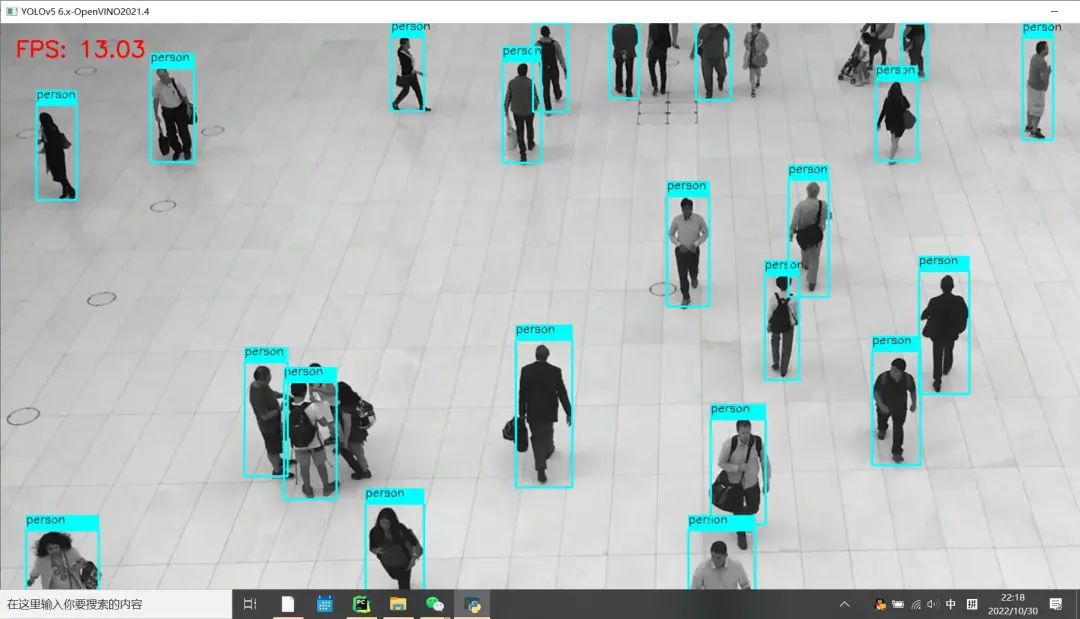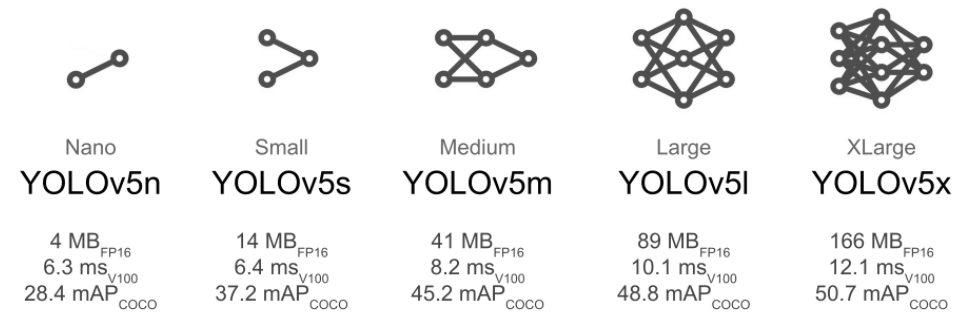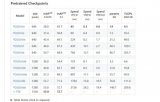测试与发现
YOLOv5官方给出的YOLOv5在OpenCV上推理的程序相对来说是比较通俗易懂的,条理清晰,有基本的封装,直接可用!但是我也发现,模型的推理时间跟前后处理的时间相差无几,特别是当视频流有多个检测到的对象时候,整个帧率会有明显下降!官方推荐的参考示例代码链接为:
https://github.com/doleron/yolov5-opencv-cpp-python/blob/main/python/yolo-tiny.py最后发现推理时间没有明显变化,主要是前后处理,有两个函数耗时比较高!从输入图像转换到模型输入数据的函数:
cv2.dnn.blobFromImage(input_image , 1/255.0, (640, 640), swapRB=True)推理之后的重叠目标框非最大抑制函数:
indexes = cv2.dnn.NMSBoxes(boxes, confidences, 0.25, 0.45)特别是非最大抑制函数,随着图像中目标数目增多,导致帧率成明显下降趋势!
修改输入转换
cv2.dnn.blobFromImage(input_image , 1/255.0, (640, 640), swapRB=True)
可以通过下面的代码等价替换:
rgb=cv.cvtColor(image,cv.COLOR_BGR2RGB) input_image=cv.resize(src=rgb,dsize=(INPUT_WIDTH,INPUT_HEIGHT)) blob_img=np.float32(input_image)/255.0 input_x=blob_img.transpose((2,0,1)) input_blob=np.expand_dims(input_x,0)
修改之后测试发现该替代降低了执行时间,说明替代有效!
修改非最大抑制
indexes = cv2.dnn.NMSBoxes(boxes, confidences, 0.25, 0.45)
输入的box格式x, y,w,h,我参考了网上的代码,修改实现一个基于并交比最简单的NMS抑制算法,基于矩阵计算,保证不会因为对象变得多了,增加计算耗时,然后把它们封装成一个单独的方法,导入该方法直接替换之前的代码行为:
class_ids, boxes = non_max_suppression_fast(np.asarray(class_ids), np.asarray(boxes), 0.75)
该函数完整的实现代码如下:
importnumpyasnp defnon_max_suppression_fast(class_ids,boxes,nms_threshold): #iftherearenoboxes,return iflen(boxes)==0: return[],[] ifboxes.dtype.kind=="i": boxes=boxes.astype("float") #initializethelistofpickedindexes pick=[] #grabthecoordinatesoftheboundingboxes x1=boxes[:,0] y1=boxes[:,1] x2=boxes[:,2] y2=boxes[:,3] #computetheareaoftheboundingboxesandsortthebounding #boxesbythebottom-righty-coordinateoftheboundingbox area=(x2-x1+1)*(y2-y1+1) idxs=np.argsort(y2) #keeploopingwhilesomeindexesstillremainintheindexes #list whilelen(idxs)>0: #grabthelastindexintheindexeslistandaddthe #indexvaluetothelistofpickedindexes last=len(idxs)-1 i=idxs[last] pick.append(i) #findthelargest(x,y)coordinatesforthestartof #theboundingboxandthesmallest(x,y)coordinates #fortheendoftheboundingbox xx1=np.maximum(x1[i],x1[idxs[:last]]) yy1=np.maximum(y1[i],y1[idxs[:last]]) xx2=np.minimum(x2[i],x2[idxs[:last]]) yy2=np.minimum(y2[i],y2[idxs[:last]]) #computethewidthandheightoftheboundingbox w=np.maximum(0,xx2-xx1+1) h=np.maximum(0,yy2-yy1+1) #computetheratioofoverlap overlap=(w*h)/area[idxs[:last]] #deleteallindexesfromtheindexlistthathave idxs=np.delete(idxs,np.concatenate(([last], np.where(overlap>nms_threshold)[0]))) #returnonlytheboundingboxesthatwerepickedusingthe #integerdatatype returnclass_ids[pick],boxes[pick].astype("int") if__name__=="__main__": boxes=[] boxes.append((163,0,27+163,41)) boxes.append((164,0,28+164,43)) boxes.append((165,0,29+165,42)) res=non_max_suppression_fast(None,np.asarray(boxes),0.25) print(res)
对比测试
两处都修改完成之后,其它输入条件与代码不变,硬件相同条件下对比测试效果如下:修改之前 Python版本OpenCV与OpenVINO上推理速度:


修改之后Python版本OpenCV与OpenVINO上推理速度:


可以看到FPS较之前有明显的提升!
-
数据
+关注
关注
8文章
7002浏览量
88937 -
程序
+关注
关注
117文章
3785浏览量
80999 -
模型
+关注
关注
1文章
3226浏览量
48806 -
OpenCV
+关注
关注
31文章
634浏览量
41337
原文标题:替换前后处理的两个函数,Python版YOLOv5+OpenCV推理帧率提升1.5倍
文章出处:【微信号:CVSCHOOL,微信公众号:OpenCV学堂】欢迎添加关注!文章转载请注明出处。
发布评论请先 登录
相关推荐
在Jetson Nano上使用TensorRT C++实现YOLOv5模型推理
【YOLOv5】LabVIEW+YOLOv5快速实现实时物体识别(Object Detection)含源码
在C++中使用OpenVINO工具包部署YOLOv5-Seg模型

在RK3568教学实验箱上实现基于YOLOV5的算法物体识别案例详解
怎样使用PyTorch Hub去加载YOLOv5模型
使用Yolov5 - i.MX8MP进行NPU错误检测是什么原因?
如何YOLOv5测试代码?
yolov5模型onnx转bmodel无法识别出结果如何解决?
在C++中使用OpenVINO工具包部署YOLOv5模型
yolov5和YOLOX正负样本分配策略

OpenCV4.8+YOLOv8对象检测C++推理演示

基于OpenCV DNN实现YOLOv8的模型部署与推理演示





 YOLOv5在OpenCV上的推理程序
YOLOv5在OpenCV上的推理程序












评论